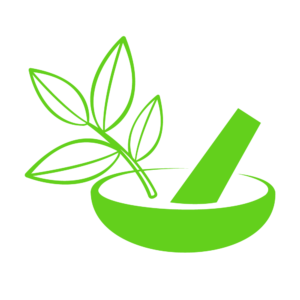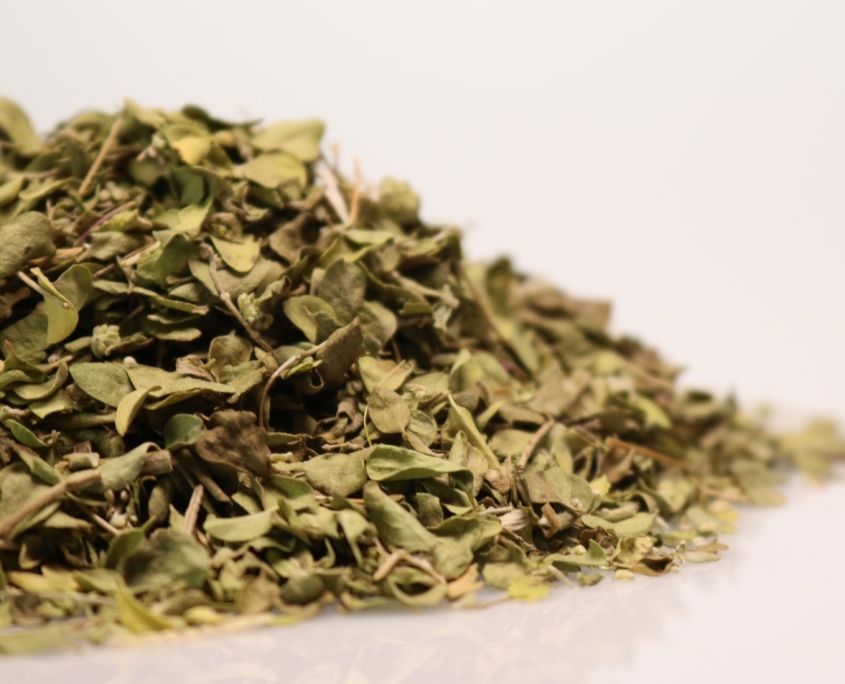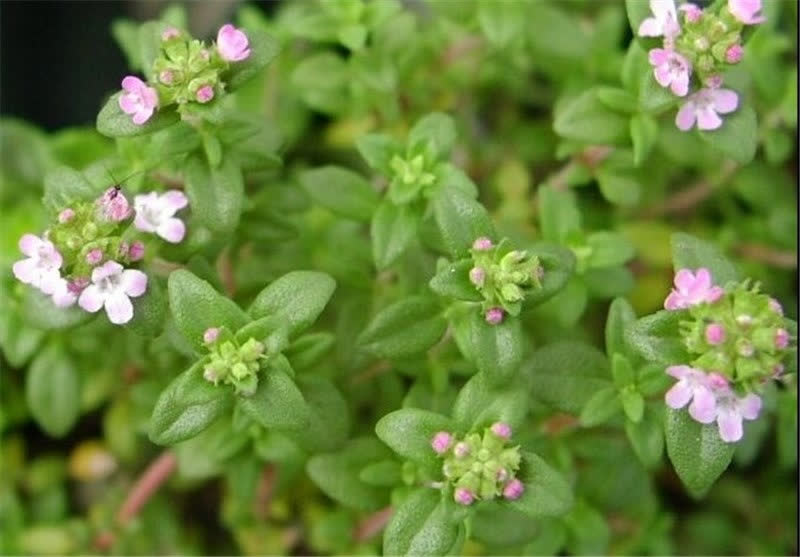Thyme
English name: Thyme
Persian name: آویشن
Another Persian name: آویشن باغی
Scientific name: Thymus vulgaris
Arabic name: العبس (ستار رسمی، البس)
French name: Thyme vulgare
German name: Gartenthymian
Family: Labiatae (mint family)
Description
Thyme is a herbaceous plant with many woody branches up to 30 cm high that grows in mountainous areas between boulders. The stems of Thyme are covered with many hairs and small leaves, the leaves are small, rhomboid, pointed and crossed on the stem. These leaves are light gray in color and have a very pungent smell.
Mountain Thyme grows in temperate regions. Its cultivated type in Iran is known as Shirazi Thyme, which is cultivated by farmers.
Garden Thyme is a cultivated type of wild Thyme (Thymus serpyllum). The Latin name wild Thyme, known as the mother of Thyme, may have been derived from the plant’s margone growth due to its manual use to treat menopausal discomforts. Pliny recommends it as an antidote to snake bites and sea animal venom, as well as a headache treatment. In ancient times, they burned Thyme because they believed that its smoke would drive away scorpions.
Historical history of Thyme consumption
The scientific name of this plant comes from the Greek word Thtmos and means strength and courage, which is a sign of the healing power of this plant.
Thyme is a plant that has been of interest to mankind since ancient times. In ancient times, it was used as an aromatic and purifying incense in the advanced societies of that day, especially in temples. This plant played a major role in embalming corpses in ancient Egypt. Greek and Egyptian doctors, even the cooks of that time, were aware of its value. This plant was used as a symbol of strength and courage in the Middle Ages, and the soldiers of that time used to decorate themselves with this plant before the war.
Thyme leaves have been a sign of courage and in ancient Greece before Christ, if they wanted to praise and praise a man’s courage, they said that he smells like Thyme. In ancient Christian legends, it is said that there was Thyme in the fodder used for the mattress in the bed of Mary Ezra and the baby Jesus.
Roman soldiers used to bathe in Thyme water to increase courage. The custom of recognizing Thyme as a hyacinth of courage has prevailed in human societies for centuries, so that even in the Middle Ages, during the era of the knights, whenever the beautiful women of Europe wanted to admire their knight lovers as brave men, beautiful ribbons that On it, the shape of the Thyme plant was sewn or woven and given as a gift.
- Principle
- Carbohydrates
- Protein
- Fat
- Calori
- Value/100g
- 0.2
- 0
- 0
- d
- Unit
- g
- g
- g
- Calori
The most important reported effects of Thyme:
Abortion, anti-allergic, anti-pain, anti-Alzheimer, anti-arthritis, anti-microbial, anti-cellulite, anti-bacterial, anti-cancer, anti-inflammatory, anti-mutagenic, anti-oxidant, anti-fever, antiseptic, anti-spasm, anti-fungal, It is anti-worm, anti-congestion, anti-cough, anti-bloating, anti-ulcer, anti-ascaris, astringent, bronchodilator, calcium antagonist, expectorant, blood lipid reducer, blood pressure reducer, immune system stimulant and insecticide. Increases body heat.
Benefits
Expectorant and antitussive
Eating Thyme has good expectorant and anti-cough properties, that’s why many products are prepared from it, especially in the form of syrup. It can also be used well in bronchitis, whooping cough and colds.
Anti-microbial and anti-itch
The antimicrobial properties of thymol are very strong and are about 25 times higher than those of phenol for a number of microbes. Also, in some products, it is used topically as an anti-itch solution, antimicrobial, rub, reddening and bath stimulant, and gargling solutions to reduce swelling of the mouth and throat.
Pain reliever and reliever
Thyme bath is useful for relieving joint pain and muscle spasms and creating vitality and eliminating laxity and fatigue. For this purpose, use boiled Thyme water. Pour it into the tub and sit in it for a while.
In medicine, common people mostly used it because of its analgesic, antispasmodic and antiflatulent effects.
Aromatic spice
Its powder is used in some spices, pickles and foods. It is used directly or together with other plants as a flavoring and anti-flatulent in the food industry.
How to use:
It is better to keep the dry leaves in a glass container and powder them before consumption so that the aroma and flavor are completely preserved.
Preparation of tea: pour a glass of boiling water on 2 grams of Thyme leaves (or powder) and strain after 10-15 minutes and drink.
Its normal consumption for people over one year old is 3-6 grams of dry leaves at one time and repeat this amount 1-3 times a day. Children under one year old can consume 0.5 to 1 gram of this plant or equivalent Thyme products several times a day.
In addition, an infusion of 5 grams of Thyme in 100 ml of water is recommended as a gargle or mouthwash or topical use.
Also, the amount of tincture consumption for adults is 40 drops three times a day and for people under one year up to one sixth of this amount.
The consumption of different syrups is according to the manufacturer’s instructions.
Side effects, precautions and contraindications:
So far, there have been no reports of side effects caused by the consumption of oral amounts of Thyme or related products, but in few cases it may cause abdominal pain or temporary loss of appetite and diarrhea and vomiting. It may also cause the appearance of albumin in the urine due to the irritation of the kidneys. Another point is that the internal use of thymol is not recommended in the presence of heart failure colitis and during pregnancy.




